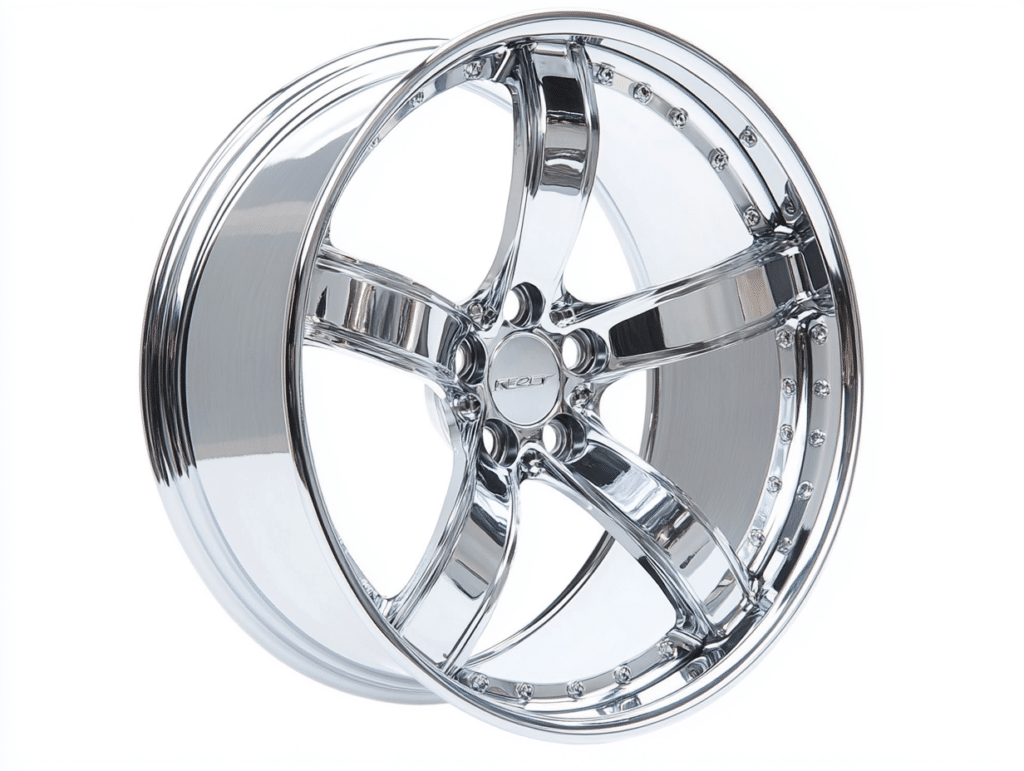Ever struggled picking the right wheels for your car?
Knowing your vehicle’s bolt pattern is essential, and the 5×110 layout is one key design that many car owners encounter. It’s a technical aspect of wheel fitting that leaves many people scratching their heads.
But understanding this bolt pattern doesn’t have to be complicated. In this guide, I’ll explain everything about the 5×110 bolt pattern in simple terms.
You’ll learn what the 5×110 bolt pattern means, which cars use it, and practical tips for measuring your bolt pattern.
Plus, I’ll give you insights about wheel compatibility that could save you time and money on your next wheel purchase.
Understanding the 5×110 Bolt Pattern and Its Measurements
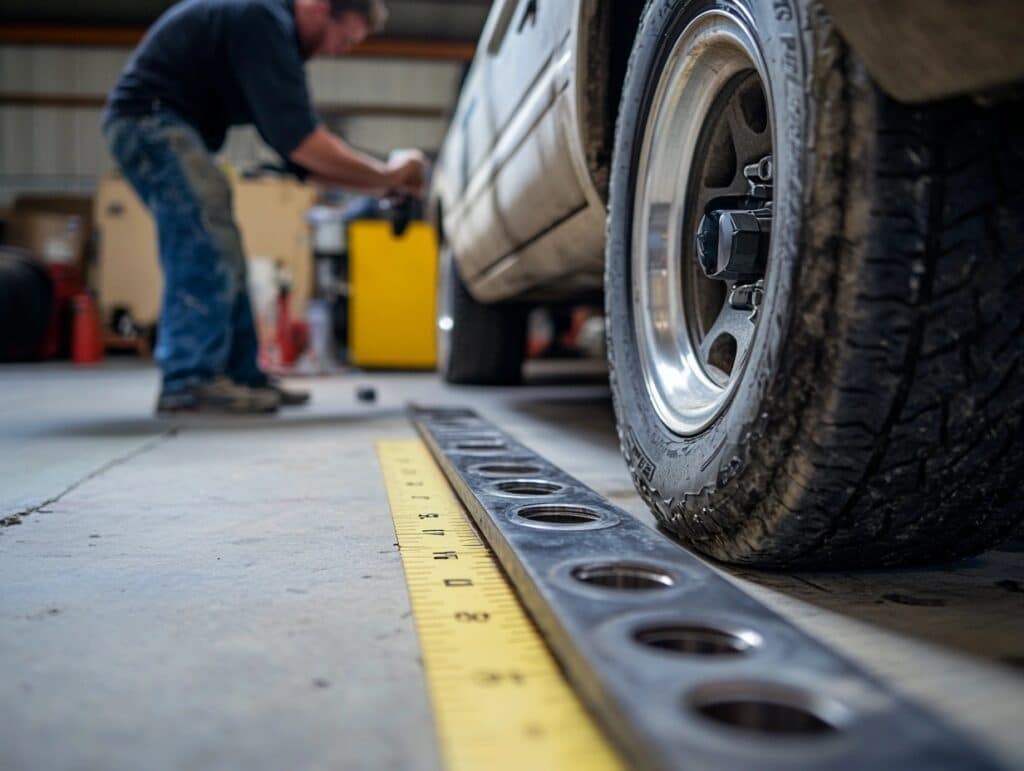
The 5×110 bolt pattern follows a simple measurement system that’s essential for proper wheel fitment.
Let me break it down for you on what these numbers actually mean and how they affect your wheel selection:
- The number “5” indicates the total number of lug holes on your wheel hub
- “110” represents the diameter in millimeters of the circle formed by the lug hole centers
- This measurement is also sometimes written as 5×4.33 (where 4.33 inches equals 110mm)
How to Measure Your Bolt Pattern
There are a couple of methods that you can use to measure your bolt pattern; let’s talk about the ones I find most effective;
1. Direct Measurement Method
- Count the number of lug holes on your wheel
- Using a measuring tape or ruler, find the distance between the centers of opposing lug holes.
- Make sure to measure straight across, not around the curve
- Convert measurements if needed (inches to millimeters or vice versa)
2. Professional Tools
- Use a bolt pattern gauge for precise measurements
- These tools are specifically designed to fit over lug bolts or holes
- Provides accurate readings every time
- Often available at auto parts stores
Vehicle Manual Reference
- Check your owner’s manual for specifications
- Look for wheel fitment information under the technical section
- Manufacturer websites often provide this data
- Service manuals include detailed wheel specifications
Why Accurate Measurements Matter
- Incorrect bolt patterns can prevent proper wheel mounting
- Proper measurements ensure wheel security
- Wrong patterns can lead to safety issues
- Accurate numbers help when shopping for new wheels
The bolt pattern measurement is a critical factor in wheel selection, making it vital to get these numbers right before making any purchases or modifications to your vehicle’s wheels.
Factors to Consider When Selecting Wheels with a 5×110 Bolt Pattern
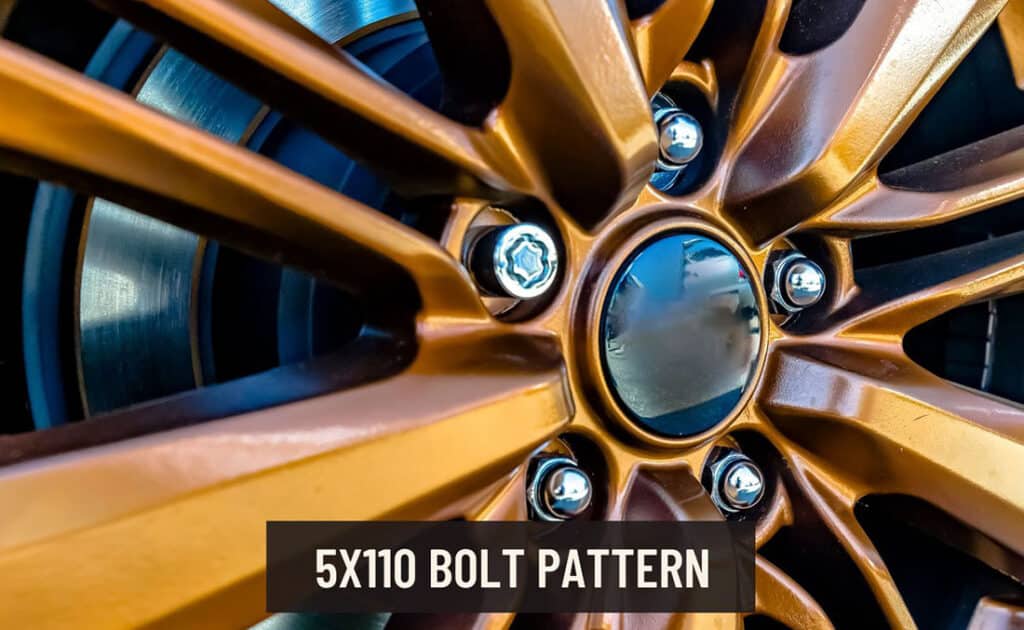
When choosing wheels with a 5×110 bolt pattern, you need to keep in mind several key factors
Wheel Size Options
- 15-inch options (15×6, 15×6.5, 15×7)
- 16-inch choices (16×6.5, 16×7, 16×7.5)
- 17-inch selections (17×7, 17×7.5, 17×8)
- 18-inch to 22-inch sizes for larger vehicles
Vehicle-Specific Requirements
- Check your vehicle’s manual for exact specifications
- Verify the wheel’s center bore matches your hub size
- Consider your vehicle’s weight and performance needs
- Make sure the wheel width fits your tire choice
Quality and Fit
- Buy from trusted wheel brands
- Look for proper testing certifications
- Check that mounting surfaces are clean and flat
- Consider using hub-centric rings if needed
Wheel choice affects how your car handles and performs. The right fit means checking more than just the 5×110 pattern – your wheel’s width, offset, and center bore must all match your vehicle’s needs.
How to Install Wheels with A 5×110 Bolt Pattern
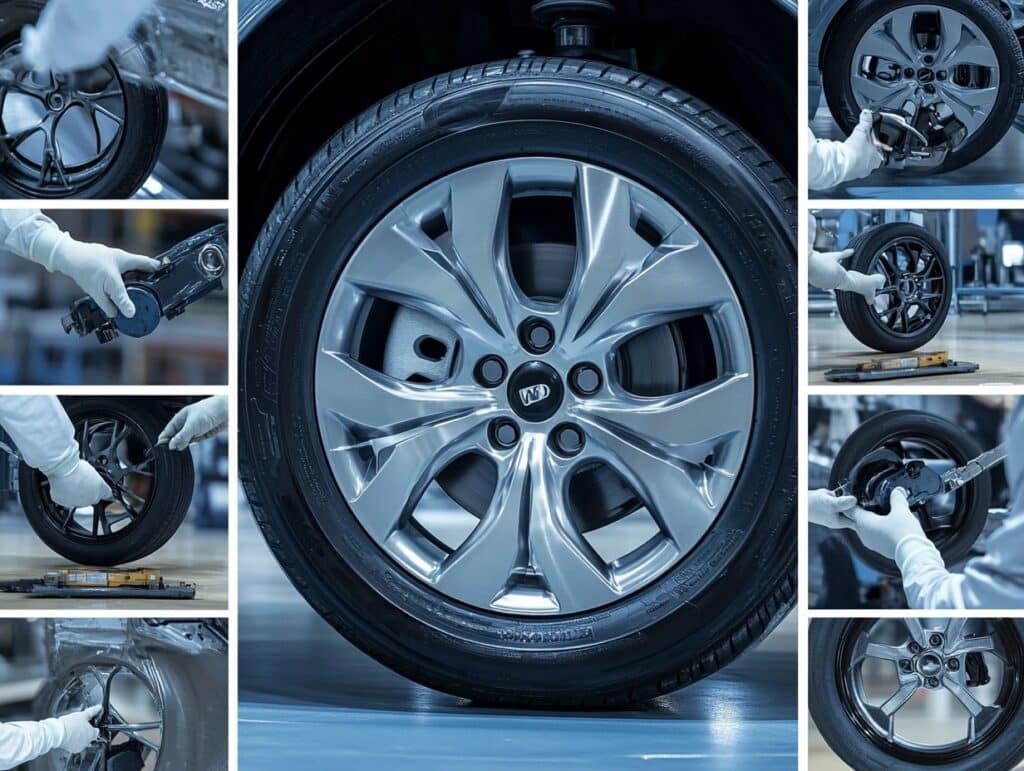
- First, park your car on flat ground and set your parking brake. Loosen those lug nuts while your car’s still on the ground – it’s much easier this way.
- Get your jack ready and lift from the right spots.
- Getting the Wheel On: Make sure you clean everything first – both the hub and the back of your wheel need to be free of dirt and rust. Slide your wheel onto the hub, and start those lug nuts by hand. Don’t use any tools yet!
- The Right Way to Tighten, by tightening in a star pattern, like drawing a star across your wheel.
Then, Start by Hand
- Give each nut a light tightening
- Go around again at half-strength
- Final round at full torque (check your manual for the right number)
Final Safety Steps
- Get your car back on the ground.
- Make sure everything looks straight and sits tight.
- Take a short test drive around the block.
- The most important thing? Come back after a day of driving to check those nuts again – they might need a quick tighten.
Note: If anything feels off during installation or your test drive, stop and get it checked. Better be safe than sorry!
Common Mistakes to Avoid During Installation
Proper wheel installation with the 5×110 bolt pattern requires careful attention to detail. Small mistakes can lead to serious safety issues and wheel problems.
1. Incorrect Torque Settings
- Not following manufacturer-specified torque values
- Over-tightening lug nuts which can damage threads
- Using impact guns without proper torque settings
2. Poor Installation Sequence
- Not following the star or cross pattern when tightening
- Tightening all nuts on one side first
- Skipping the initial hand-tightening step
3. Measurement Errors
- Assuming all 5-lug patterns are the same
- Not double-checking bolt pattern measurements
- Mixing up millimeter and inch specifications
4. Surface Issues
- Not cleaning mounting surfaces properly
- Leaving old rust or debris on hub faces
- Forgetting to check for damaged studs or threads
5. Wheel Centreing Problems
- Not using hub-centric rings when needed
- Incorrect hub bore diameter
- Misaligned wheel center with hub center
Remember: A proper wheel installation ensures your safety and prevents costly wheel damage.
Applications of The 5×110 Bolt Pattern in Different Vehicles
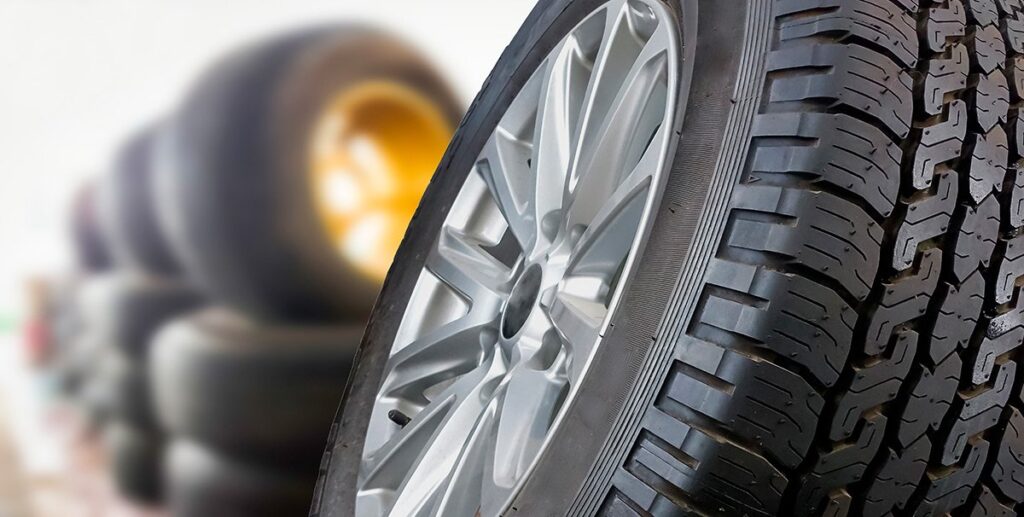
The 5×110 bolt pattern setup has five bolts arranged in a circle, spaced 110 millimeters (4.33 inches) apart.
Car makers pick this design because it spreads the weight evenly and keeps passenger vehicles stable.
Basic Structure
- Five bolts arranged in a perfect circle
- 110-millimeter diameter (4.33 inches) spacing
- Even distribution between each bolt point
Vehicle Compatibility
The 5×110 bolt pattern fits all your big cars and SUVs, making it a common choice among modern vehicle manufacturers worldwide.
Mid-sized Vehicles
- Perfect fit for standard passenger cars
- Supports typical vehicle weights
- Matches well with common wheel sizes
SUV Applications
- Strong enough for larger vehicle weights
- Works with bigger tire sizes
- Maintains stability on varied road conditions
Design Versatility
- Fits multiple wheel sizes and styles
- Works with both steel and alloy wheels
- Supports various tire widths and heights
Everyday Use Benefits
- Great for city driving conditions
- Handles highway speeds well
- Supports regular commuting needs
Customization Options
- Compatible with many aftermarket wheels
- Allows for style updates
- Keeps original safety standards intact
This pattern serves as a foundation for many vehicle types, letting owners maintain their cars while having options for changes. Car makers keep using this pattern because it works so well for both practical needs and style preferences.
Benefits of The 5×110 Bolt Pattern
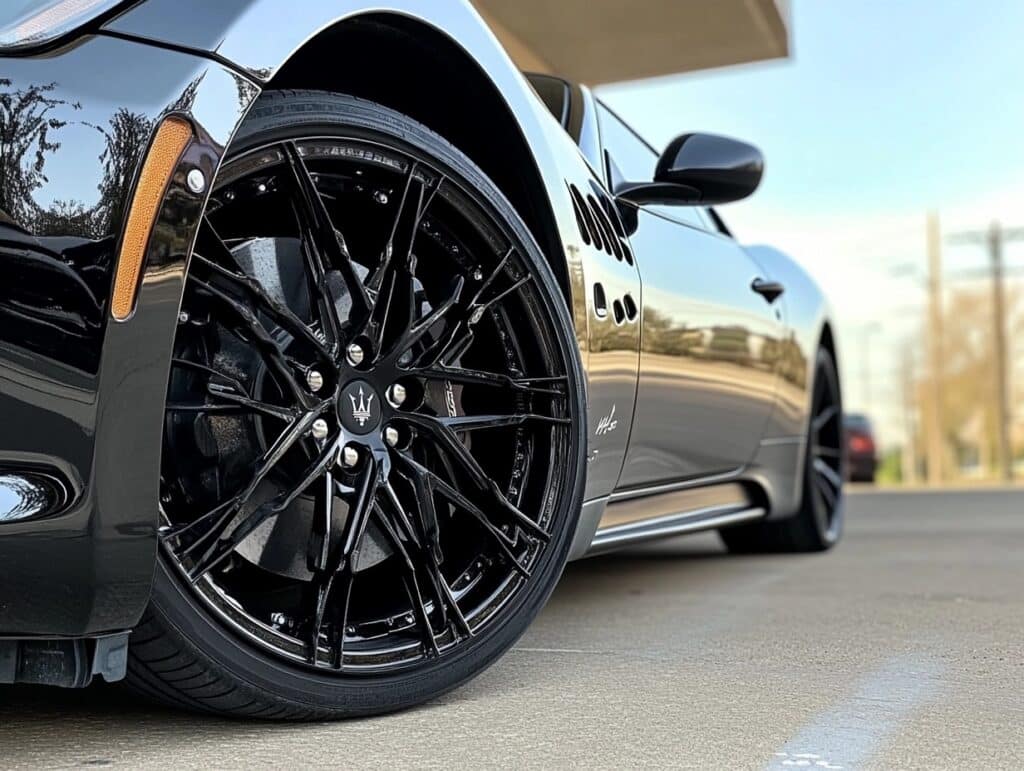
The 5×110 bolt pattern stands out with several notable benefits that make it a practical choice for many vehicles.
- First of all, this design significantly improves the distribution of vehicle weight because of its five-point mounting system. When compared to traditional 4-bolt layouts, this setup handles heavier loads much better.
- Safety remains a key strength of this pattern. In situations where a single bolt might become compromised, the remaining four bolts can still maintain wheel stability long enough for a short drive to safety.
- The pattern also offers flexibility in wheel choices. Car owners can select from various wheel sizes and styles that match their preferences while maintaining reliable performance.
- Additionally, the five-bolt design proves particularly suitable for city driving conditions, striking an effective balance between daily usability and solid performance.
List of Vehicles Using 5×110 Bolt Pattern
The Pontiac G6, Chrysler 200, Chevy Cobalt and Malibu, and Jeep Cherokee are pretty common examples of vehicles that use the 5×110 bolt pattern. 5-bolt wheels are typically on midsize vehicles.
| Brand | Model | Production Years |
|---|---|---|
| Maserati | MC20 | 2020 |
| Cadillac | Catera | 1997-2001 |
| Jeep | Cherokee | 2014-2022 |
| Compass | 2018-2022 | |
| Renegade | 2015-2022 | |
| Chevrolet | HHR Panel | 2007-2011 |
| Malibu | 1999-2012 | |
| Malibu Classic | 2008 | |
| Malibu Hybrid | 2008-2009 | |
| Malibu MAXX | 2004-2007 | |
| Tesla | Tesla Roadster | 2006-2012 |
Conclusion
The 5×110 bolt pattern represents more than just a technical specification – it’s your gateway to personalizing your vehicle while maintaining safety and performance.
By now, you understand that this pattern isn’t limited to a single vehicle type, spanning from classic Cadillacs to modern Alfa Romeos.
Whether you’re replacing worn wheels or planning an upgrade, the 5×110 pattern gives you impressive flexibility. The ability to handle various wheel sizes, from 15 to 22 inches, means you can find options that match both your style preferences and driving needs.
Plus, with most manufacturers supporting this pattern, you’ll have access to quality wheels at competitive prices.
Looking for your next set of wheels?
Take the first step by measuring your current setup – you might be surprised by the possibilities that await.
Frequently Asked Questions
What Cars Use a 5×110 Bolt Pattern?
Alfa Romeo models (Giulia, Stelvio), Jeep (Compass, Renegade), Tesla Roadster, Cadillac BLS, and several Chinese brands like BAIC and Changan use the 5×110 bolt pattern.
Will 5×110 Fit 5×114?
No, 5×110 wheels won’t fit 5×114.3 hubs directly. The 4.3mm difference makes proper mounting impossible without wheel adapters.
Can 5×110 Fit 5×112?
No, 5×110 wheels cannot fit 5×112 hubs safely. While adapters exist, the 2mm difference could affect wheel stability and safety.
What Cars Have the Same Bolt Pattern as a Pontiac G6?
Cars sharing the Pontiac G6’s 5×110 bolt pattern include Saab 9-3, Saturn Aura, Chevrolet Cobalt, and several Alfa Romeo models.


